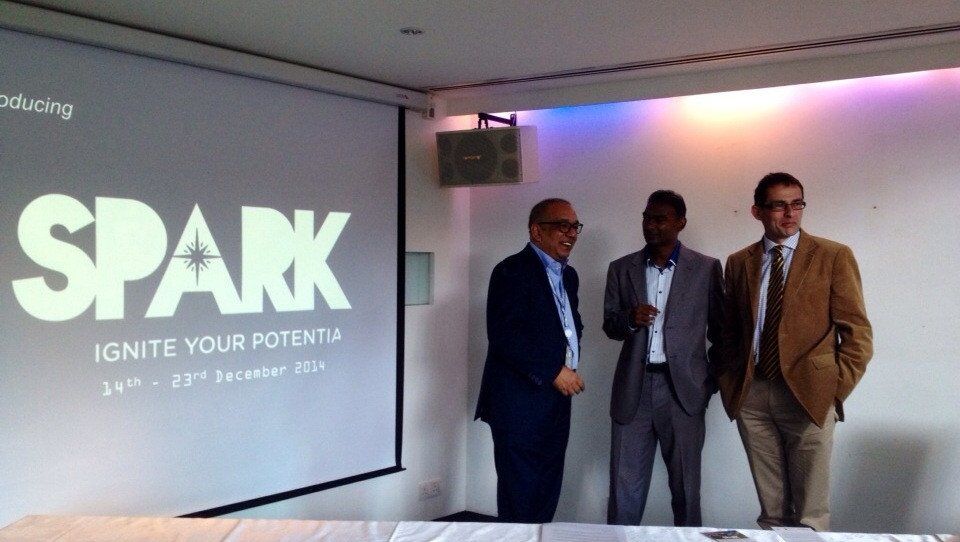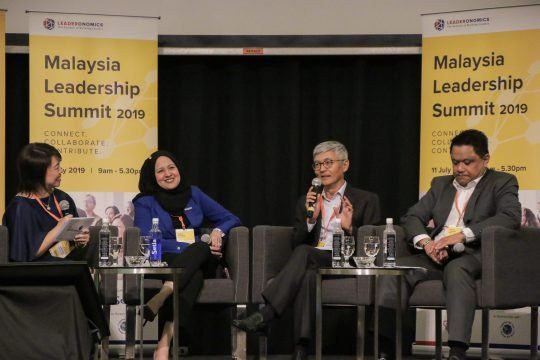Predicting The Future

Impact and strategies to deal with ageism
The topic of graying population in Europe has been a greatly debated one for years now. Concerns over the discrimination of ageism prompted many studies on attitudes towards age.
One in particular, published by Age UK in partnership with EURAGE in 2011 carries a comprehensive analysis of data from the European social survey, from less than four years ago. A total of 54,988 respondents from 28 European Union (EU)member states and candidate countries participated in this study.
According to the report, more than 17% of Europeans are aged 65 and above, with about 164 million people classified as senior citizens.
The research brings into question the impact of increasing life expectancy, decreasing fertility, and the need for longer working lives if pension promises are to be sustainable.
Global ageism
While this study was conducted in Europe, the results and insights of the report must not be ignored by Asian countries.
This is because the reality is that almost all developing countries experience better life expectancy, lower fertility rates and consequently, the need for active and fairly productive passive income in order to sustain their livelihood and lifestyles in their retirement years.
These trends have significant implications for many aspects of modern life: the labour market, workplace technologies, consumer behaviour, social security systems, national health arrangements, and economic growth as a whole.
The European social survey looked particularly at the threats perceived in relation to employment. This is relevant given the general pressure to raise pension ages and the target set by the Europe 2020 Strategy to reach 75% employment of all Europeans aged 20 to 64 by 2020.
Currently only 46% of people aged betwteen 55 and 64 are at work. This drops to 11% of 65- and 69-year-olds and 5% of those aged 70 and 74.9.
The negative attitudes towards mature workers confirmed in the survey also point to an underlying weakness in EU employers’ ability or willingness to retain mature workers.
This can have serious economic and social consequences, including increased poverty among earlier retirees, greater demand for benefits among unemployed mature workers, and deteriorating physical and mental health for unemployed mature Europeans as activity declines.
Another interesting study that provides useful insights to this topic is the one conducted by Community Business, a membership-based non-profit organisation consisting of multinational organisations from various industries around the world.
Their paper titled Ageing: Impact on Companies in Asia touched on key issues around ageism and how it affects both business and government arenas.
It asserts that there is a need for a fundamental shift in the way we view age in the workplace and a need to challenge our thoughts about traditional career paths, as the current approach is no longer appropriate and limiting corporate performance.
China and India, in terms of the size of their graying populations, take the top two slots (see Figure 1).
Actual numbers also reveal that over one half of the world’s older people currently live in Asia. This proportion is set to increase to two-thirds by 2050.
The United Nations (UN) identified “global ageing” as one of the top three socio-economic issues facing Earth in the 21st century – the other two key issues being “global warming” and “global terrorism”.
In one of its reports entitled World Population Ageing: 1950–2050 the UN emphasised that:
- Population ageing is unprecedented, without parallel in human history. The 21st century will witness even more rapid ageing than the last century.
- Population ageing is pervasive; a global phenomenon affecting every man, woman and child. However, countries are at very different stages of the process, and the pace of change differs greatly. Countries that started the process later will have less time to adjust.
- Population ageing is enduring. We will not return to the young populations that our ancestors knew.
- Population ageing has profound implications for many facets of human life.
The global statistics in Figure 2 provides further insights into our changing world and how these unprecedented situations require immediate and revolutionary attention and action.
In terms of life expectancy, UN World Population Prospects report that Japan and Singapore have the highest average life expectancy at 82.7 and 80.3 years respectively.
Asia as a whole, has an average life expectancy of 68.8 years with Malaysia at 74.2, the United States at 79.2 and the United Kingdom at 79.4.
Ageism and its implications
While there are many perspectives around the issue of ageism and its impact on political, social, and economical factors, we will focus our discussion on the serious implications it has on the business sector, namely on the employment and leadership dimensions of organisations in Asia.
Some of the significant impact on the workplace include:
Loss of expertise in a big way
Big groups of experienced employees of those born in the Baby Boomers generation (1946–1964) will reach the regular retirement age bracket.
Thus, organisations will be facing the fact that their senior managers and well-qualified subject matter experts will be leaving in droves, resulting in loss of critical skills, experience and relational connections that would be possibly hard to replace.
Typical retirement ages may not be suitable anymore
In the early days of the corporate revolution, retirement age would typically be around 60 to 65; it was also presumed that retirees who work do not live longer past that age.
However, even though modern science and health of employees have improved, therefore extending life expectancy significantly, the overall retirement bracket has not moved much.
This is despite the fact that most employees are still fit enough to continue working past retirement. This would be a significant loss to the organisation in terms of subject matter expertise, experience and important industry relationships from these retirees.
Not to mention the economic needs that most employees have to fulfill in order to support their livelihood for 10 to 20 years more past retirement age.
Shortage of renewable talents
With declining births, organisations will no longer be able to rely on a renewable pool of resources to replenish the outgoing senior workforce.
The fact of the matter is that recruitment is going to get more difficult because there are fewer choices to select from.
Change in expectations of younger generation
Generation-Y and later generations are generally no longer interested in typical corporate jobs. They are more inclined to pursue their inner entrepreneurship calling, no doubt inspired by the successful startups around them that have somewhat rewarded the young enterprising generation with a quick and satisfying pathway to success.
Basically, it’s the concept of “more time for myself, doing something I love and I don’t have to necessarily listen to the comments of others, as long as I feel right about what I am doing”.
Challenge for employees having to take care of elders
With longer life expectancy, working employees will have one or more family members dependent for finances, attention, care, etc.
Often times, this can present an awkward challenge for the employee who may get distracted having to respond to urgent needs of the elderly.
One study reports that by 2020, more than 30% of employees will have one or more dependants.
Strategies for the future
Let’s look at some possible strategies that organisations can consider to mitigate these challenging and impending outcomes.
For the organisation (human resources, organisation development, etc)
1. Succession planning process must be done regularly, involving key leaders of the organisation.
Target to have at least three levels of succession readiness for key roles in the organisational chart and resources (if not, then action plans must be implemented to fill the gaps).
One way to manage the process is to use the Hoshin planning system’s thinking methodology.
Hoshin kanri (direction management in Japanese) is a method devised to capture and cement strategic goals as well as flashes of insight about the future and develop the means to bring these into reality.
2. Encourage employees to develop a career plan so that they take control of their own progressive growth within the organisation.
Help employees from the new generation work in roles that are aligned and fuel their passion.
3. Expect each leader to perform coaching, mentoring and succession planning.
Include these areas as part of their key performance indicators.
For the leader
1. Only approve training programmes that are effective and aligned to business outcomes, not just to train for knowledge and skills.
Invest in training that delivers a learning journey rather than just a two- or three-day training programme.
Leverage on the Six Disciplines of Breakthrough Learning methodology to turn training into business outcomes (See Figure 3)
(Above: Figure 3)
2. Implement a culture of coaching so that productivity and employee contribution is well balanced, thus empowering a leadership-enriched organisation where everyone is encouraged to pursue excellence.
3. Target your successor(s), build relationships, mentor and groom them by empowering these candidates so that they actually gain hands-on experience with your job responsibilities.
This will help encourage longer service tenure from key talents so that quality resources and experience are kept within the organisation.
For the employee who is approaching retirement
Studies show that in Malaysia, the average retiree will only have enough savings to last 17 years past 55 years old.
This savings are the income that you have earned and kept aside (including principal and interest earned from fixed deposits plus Employees Provident Fund savings. This means that by the time senior citizens reach 72 years old, they would have depleted all their hard-earned savings.
This is certainly an area of concern, as the average life span for Malaysia will rise in the coming years to almost 79 years on the average.
There will be a gap of seven years impacting senior citizens’ ability to maintain their regular lifestyle that they have been accustomed to.
One of the solutions here is for senior citizens to make wise investments early in their career, especially during their mid-management roles, perhaps through property investments or via a credible fund management organisation, spreading across a mixed financial portfolio.
For young employees (and those joining the workforce)
1. Manage your own employment growth early by charting your career plan with your human resources department or immediate supervisor.
2. Take every opportunity to get yourself ready not just for your current role, but for your next role as well. Attend training for the purposes of embracing applicable strategies to be brought back to the workplace.
3. Show initiative to go beyond regular expectations from your bosses. Be patient and explore the opportunities of trying out various roles your organisation.
Try to focus more on long-term growth within the same organisation, rather than short-term growth by changing jobs too often.
5 key points
- Manage succession planning regularly and effectively.
- Help employees develop their own career plan and have them work on it.
- Implement coaching culture that empowers growth.
- Approve and invest only in training that is aligned to business outcomes.
- Empower staff to embrace exceeding expectations and groom talents for hands-on exposure towards your job scope.
Raymond Phoon is an author, business coach, multi-business award winner, HRD consultant and an international motivational speaker. To engage with him, write to editor@leaderonomics.com
First published in English daily The Star, Malaysia, 18 October 2014
Business








